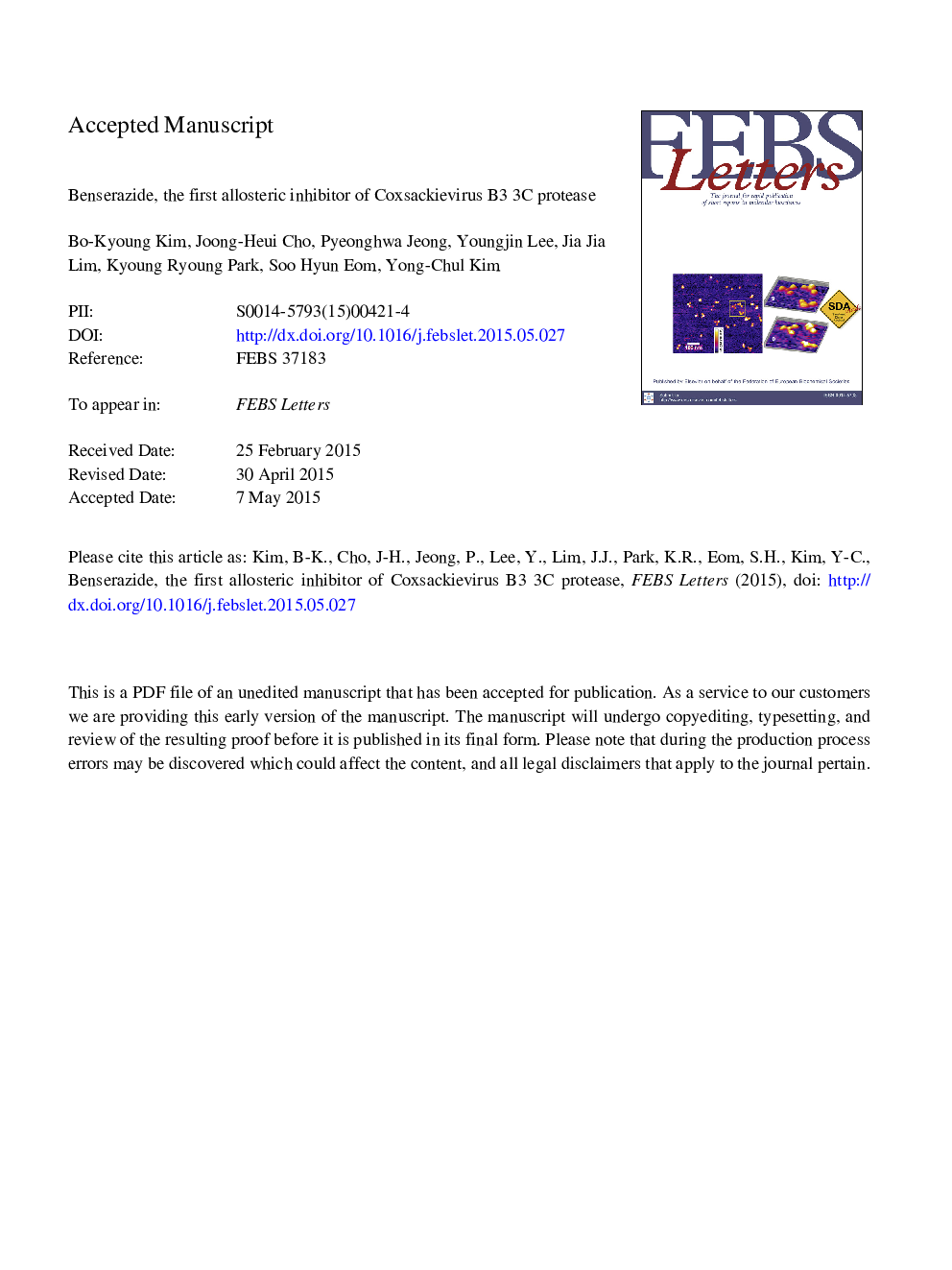| Article ID | Journal | Published Year | Pages | File Type |
|---|---|---|---|---|
| 10870067 | FEBS Letters | 2015 | 34 Pages |
Abstract
Coxsackievirus B3 is the main cause of human viral myocarditis and cardiomyopathy. Virally encoded Coxsackievirus 3C protease (3Cpro) plays an essential role in viral proliferation. Here, benserazide was discovered as a novel inhibitor from a drug library screen targeting Coxsackievirus 3Cpro using a FRET-based enzyme assay. Benserazide, whose chemical structure has no electrophilic functional groups, was characterized as a non-competitive inhibitor by enzyme kinetic studies. A molecular docking study with benserazide and its analogs indicated that a novel putative allosteric binding site was involved. Specifically, a 2,3,4-trihydroxybenzyl moiety was determined to be a key pharmacophore for the enzyme's inhibitory activity. We suggest that the putative allosteric binding site may be a novel target for future therapeutic strategies.
Keywords
IC50OctylphenoxypolyethoxyethanolIGEPALBenserazidetert-butyloxycarbonylCVB3BOCCoxsackievirus B3TFATLCDTTDCMNaClHEPESESI1H NMR4-(2-hydroxyethyl)-1-piperazineethanesulfonic acidl-DOPAEDTAEthylenediaminetetraacetic acidTrifluoroacetic acidFluorescence resonance energy transferFRETDichloromethanedithiothreitol13C NMRAllosteric binding siteSodium chlorideEnzyme kineticsproton nuclear magnetic resonance spectroscopylevodopaNon-competitive inhibitorthe half maximal inhibitory concentrationpolymerase chain reactionPCR3C proteasethin-layer chromatographyelectrospray ionization
Related Topics
Life Sciences
Agricultural and Biological Sciences
Plant Science
Authors
Bo-Kyoung Kim, Joong-Heui Cho, Pyeonghwa Jeong, Youngjin Lee, Jia Jia Lim, Kyoung Ryoung Park, Soo Hyun Eom, Yong-Chul Kim,
